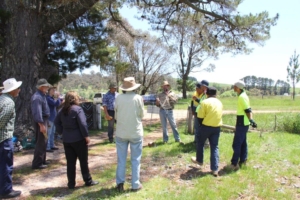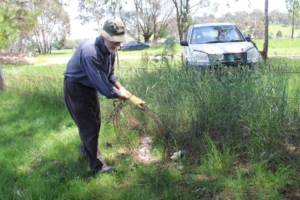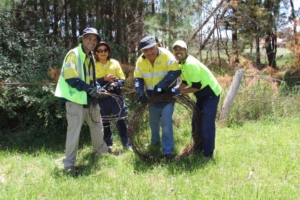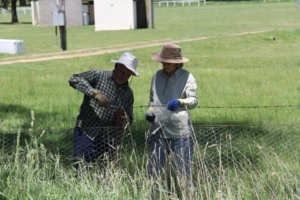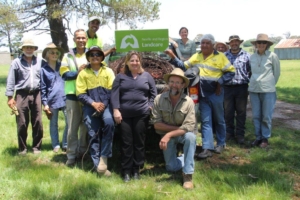No one likes to see animals suffer and yet everyday our native wildlife bears the brunt of altercations with domestic animals, feral predators, vehicles and barb-wired fences. Thankfully though, there is a growing movement across rural Australia to minimise at least one of these hazards from key areas in the landscape.
Barb Busters is a wildlife-friendly fencing campaign adopted as part of restoring the Glideways of Kanangra-Boyd to Wyangala link (K2W) a conservation partnership with a growing number of projects in the region. Working with Mikla Lewis from Young and District Landcare who came up with the Barb Busters idea, K2W has been organising working bees to remove or replace barbed wire on local properties along the Abercrombie corridor in conjunction with Neville and Region Landcare and the Orange Local Aboriginal Land Council.
“Our goal over the next year is to remove a further 4km of barbed wire from within the K2W corridor and replace it with wildlife friendly fencing,” says Mary Bonet, K2W Glideways Coordinator.
“While barbed-wire is important for stock control and its use is firmly entrenched in our rural community, it’s a problem for many types of native animals including kangaroos, birds, bats and gliders.
“Nocturnal animals such as the Squirrel Glider, Sugar Glider, Tawny Frogmouth and owl are particularly at risk of entanglement as they glide along watercourses or between nesting trees and patches of habitat in which they feed.
“Encounters with barbed wired fences lead to serious injury and in many cases the animal faces a cruel death or permanent injury as they struggle to free themselves,” she says.
Given there is an estimated tens of millions of kilometres of fencing subdividing the Australian landscape with sixty five percent of these having barbed wire on the top strand, the problem is huge. More than 75 wildlife species have been identified as occasional or regular victims of barbed wire fence injury.
“There are very good alternatives now to barbed wire fences,” says Mary.
“Multi-strand high-tensile plain wire or a combination of high-tensile plain wire and ring lock is just as effective in controlling stock, as is solar-powered electric fencing.
“Replacing the top one or two strands of an existing fence with plain wire can also make areas safer for wildlife and split poly pipe has be used to successfully conceal barbs in pathways frequented by gliders, birds, bats, kangaroos and wallabies,” she says.
“If you have barbed wire on your fences that you would like K2W to remove, particularly in areas of high wildlife activity, we would love to hear from you.”
The K2W Barb Busters program is part of Glideways a partnership with Taronga Zoo and Boeing, the Foundation for National Parks & Wildlife and the NSW Environmental Trust and Local Lands Services working to restore habitat in strategic areas within the Kanangra-Boyd to Wyangala link. Future barb Busters workshops are planned in the Abercrombie River area in coming months.
Landholders who are interested in removing or replacing sections of barbed wire on their property should contact Mary at Glideways at www.k2wglideways.org.au or mary@k2wglideways.org.au
Further information on the impact of barbed wire on wildlife and what you can do about it can also be found at www.wildlifefriendlyfencing.com.au






